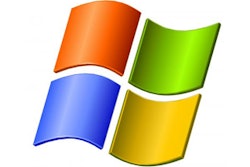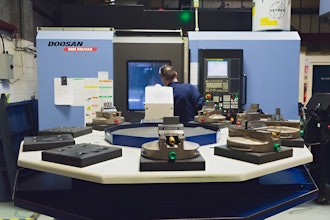Manufacturing Business Technology took some time with Pete Zimmerman, manufacturing segment manager of VAI, on selecting ERP software, the obstacles manufacturers face, and the latest functionality trends hitting the market.
Manufacturing Business Technology: ERP software selection can be a daunting task for manufacturing companies. What are some of the biggest obstacles that companies are dealing with when it comes to ERP software selection?
Pete Zimmerman: There are multiple obstacles manufacturers often face when considering an ERP solution. First, gaining sponsorship from the executive level must be achieved. Executive management must be on board with the need to implement a new ERP application. Executives must have a clear understanding of the objectives of such an implementation, and the expected ROI.
Organizations must then document their requirements for the enterprise. From accounting, inventory, warehouse, manufacturing and throughout and across the entire supply chain, businesses should clearly define the current processes, and what they need going forward.
Once the enterprise requirements are understood, companies should match each vendor's application against those requirements and decide which vendor best meets the overall needs of the organization. In addition to a vendor's product offerings and costs, other things to consider include the type of support they'll receive, any partner alliances they have, and very importantly, references. Does the vendor have other companies in the same industry and size structure running that software, and do they speak highly of both the products and the company? Taking a look at the overall product, vendor history and a happy customer base can help an organization make a determination as to the closest possible vendor match and selection.
The final ERP solution selection can sometimes be tricky. Often, one solution may shine in one area, while another solution may be strong in others. There are also a number of other factors such as total cost, support, and fitness that are key factors in making a decision. Everyone needs to be on board with the final decision to ensure the organization is ready to implement the selected solution.
MBT: How is VAI helping companies overcome these obstacles? What tips would you give companies in making the right software selection?
Zimmerman: VAI makes it a priority to understand its customers, and their requirements both today and going forward. VAI matches its products to those requirements and personalizes the software accordingly.
Heading into the ERP software selection, companies should make sure they have executive level sponsorship behind them so they have the full capability to research, contact, visit with and evaluate every applicable vendor. As discussed earlier, clearly define all requirements so that the selection team and the participating vendor can properly address those needs. Another important tip - don't forget to be open-minded! A new ERP solution can be challenging and as such, the team should be open to change and ready to move forward in a new direction.
MBT: What are some of the latest features and functionality trends hitting ERP software right now?
Zimmerman: Government regulations are currently a driving force in determining the need for new feature and function or replacement of the software in areas such as lot tracking. Cloud Computing is another big trend as companies evaluate whether they should remain on-premise, put their software and hardware in the cloud, or perhaps invest in a hybrid solution. We also see big trends towards Business Intelligence. An Analytics solution can create powerful dashboards and reports that companies can use to identify anomalies that can turn into significant business issues. Companies want to be able to analyze opportunities and trends and have access to accurate information they can use to help grow revenue, protect margins and improve profitability.
Mobile technology is one of the leading new technologies that provide a company with the ability to maintain an aggressive edge in a highly competitive market. Mobility allows companies to integrate the enterprise data with mobile computing devices, giving remote workers easy access to customer and product information at the point of customer contact.
An Inventory Management system remains a staple requirement as it can effectively and efficiently handle all of a company's inventory requirements. Manufacturers will have the right products when they need them, and will also be sure they are not ordering the wrong products. With an Inventory Management solution, businesses can reduce costs, save time, and improve customer service, especially when combined with the benefits of a new Warehouse Management System (WMS).
Transferring accurate data from the warehouse and the shop floor to the enterprise application in an efficient manner can be a never-ending challenge. By automating component tracking and put-aways with a warehouse management system such as VAI S2K WMS, companies can process material issues for production more efficiently. Access to accurate, up-to-minute views of inventory allows companies to hold only what is needed, when it's needed, thereby reducing carrying costs.
MBT: Why are these features and functions important for manufacturers? How will they help companies?
Zimmerman: These technologies allow manufacturers to be more productive, better able to maintain quality control and realize greater customer service - all of which leads to more streamlined operations and enhanced efficiencies across the organization. It is critical that companies invest in the technologies needed to remain competitive, and we are seeing a significant interest today in these areas.
MBT: How do VAI’s software solutions help companies gain better business intelligence? And how does this help to improve productivity?
Zimmerman: Alot of companies are data rich but information poor - they do not have the ability to access the tremendous amount of data streaming in from their ERP solutions. S2K Analytics makes that information accessible to the line of business managers, giving them the ability to determine how they can most successfully develop better business programs for their products and services. With the ability to spot trends - such as a customer’s interest in new products, and/or a reduction in labor efficiency - can translate into increased sales and a reduction of costs.
MBT: How flexible are ERP systems and what is VAI doing to foster ease-of-use for companies?
Zimmerman: While some ERP systems are not designed for alterations, VAI works with its customers to make sure they have greater flexibility and ability to expand and grow with the technology. VAI customers can start with the implementation of the ERP back-end, then add on other functions such as Analytics, e-Commerce, Supplier Management and Vendor Performance.
MBT: What are the questions manufacturers should be asking of their software? What should companies make sure their software is doing for them?
Zimmerman: Manufacturers will want to make sure they understand how the software is integrated - is it from one vendor, or are there multiple vendors involved? Additionally, what is the cost to run the solution and what will the ongoing support be like? Manufacturers should also make sure the software can react quickly and efficiently to customer demands. For example, is there flexibility in forecasting and production so the software can handle unforeseen customer requests? The bottom line is to make sure the software is handling the business requirements the company identified and outlined earlier on during the selection process.
For more information on VAI, please visit www.vai.net.






















